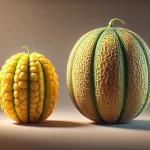Determining the ideal harvest time for melons is crucial to ensure the best quality, flavor, and shelf life of the fruit. Timely harvesting directly impacts profitability and consumer satisfaction. In this article, we explore the technical indicators, evaluation methods, and practical tips to identify the optimal harvest time for melons, ensuring a high-quality product.
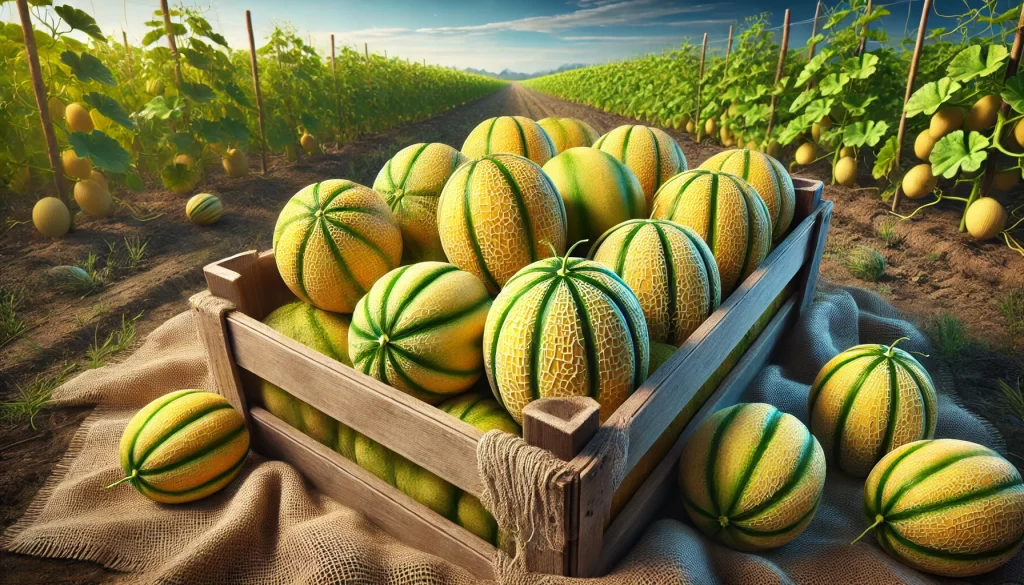
Indicators to Determine Harvest Time
Physiological Maturity
Physiological maturity of the melon refers to when the fruit has reached its ideal internal and external characteristics for harvest. Some aspects to consider:
- Skin color: Depending on the variety, the melon acquires a characteristic tone. For example, in varieties like Cantaloupe, the skin changes from green to golden beige around the stem area.
- Texture and firmness: The skin should feel firm but not rigid, and the fruit should yield slightly under pressure, indicating it’s ripe without being too soft.
- Fragrance: A ripe melon emits a sweet, characteristic aroma, especially near the stem end.
Size and Shape
The full development of the size is another indicator. The fruit should have reached the dimensions specific to its variety, with a regular shape and no deformities.
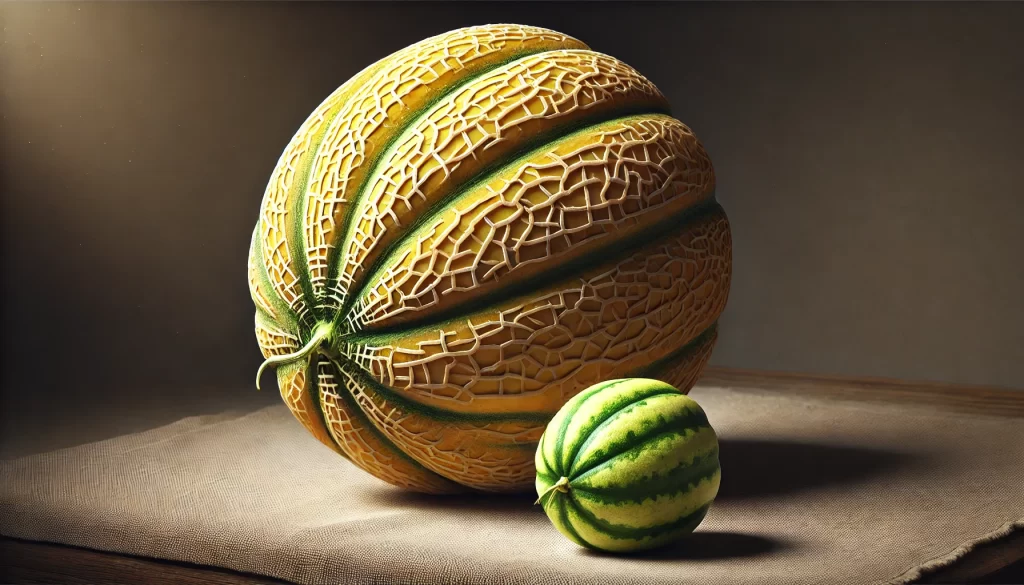
Time After Flowering
The period between flowering and fruit maturity is a good reference:
- Days after flowering (DAF): Many melon varieties reach maturity between 80 and 100 DAF. Knowing this range helps plan the harvest, though direct observation is key.
Methods for Evaluating Melon Maturity
Visual and Tactile Inspection
Directly inspecting the fruit is the most common method. Observe the color, texture, and firmness to estimate maturity.
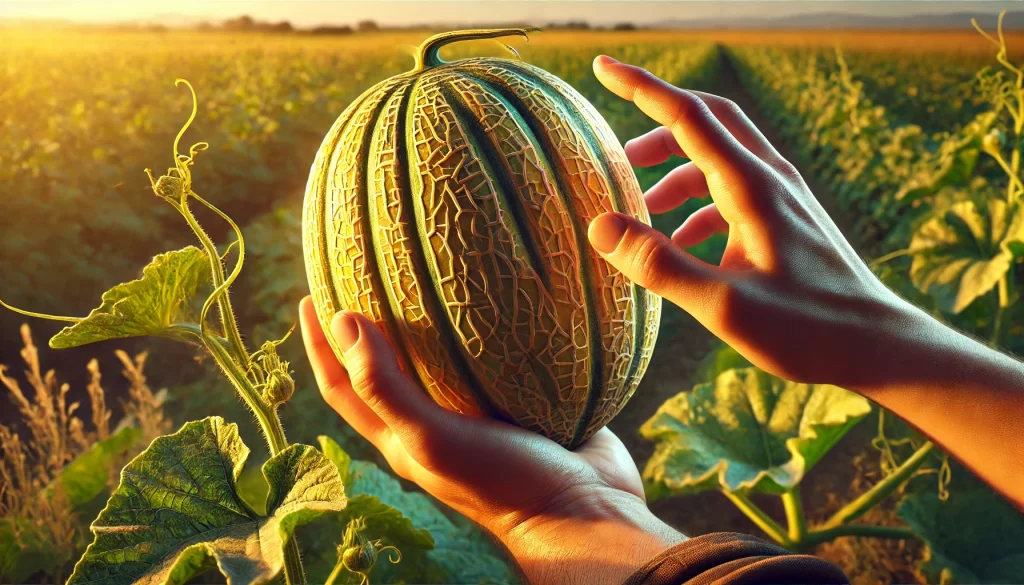
Softness Test
Lightly press the skin with your fingers. A ripe melon will yield slightly under pressure without being soft, signaling an optimal balance between firmness and softness.
Aroma Evaluation
Smelling the base of the fruit near the stem can be very revealing. A sweet, fragrant aroma is a clear indication of advanced maturity.
Practical Tips for Optimal Harvest
- Take periodic samples: During the final maturity phase, evaluate several fruits to determine consistency in the maturity of the batch.
- Know your variety: Different varieties have distinct maturity indicators. Familiarize yourself with the specific traits of the variety you’re growing.
- Record observations: Keep track of observed maturity conditions and harvest days to adjust for future seasons.
- Harvest at the right time: Avoid waiting too long once the fruit has ripened, as quality and shelf life may decline.
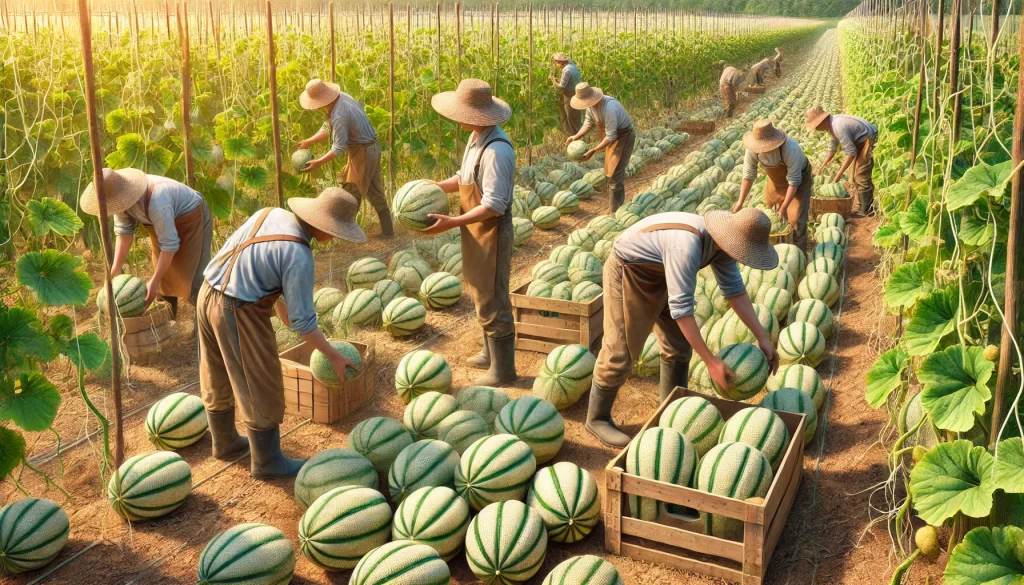
Impact of Timely Harvest
A harvest made at the right time guarantees:
- Ideal flavor and sweetness: The sugar content and texture are maximized.
- Longer shelf life and better presentation: Fruits harvested at their optimal time have better preservation and are more appealing to the consumer.
- Reduced losses: Minimizes the risk of over-ripening, which can affect marketing and increase post-harvest losses.
Conclusion
Knowing when to harvest melons is a skill that combines practical observation, variety knowledge, and monitoring physiological indicators. Through visual and tactile inspection, aroma evaluation, and understanding the post-flowering period, farmers can precisely determine the optimal harvest time, ensuring a high-quality product and maximizing crop profitability.
References
- Stewart, R.R., & Alston, R.D. (2003). “Principles of Horticultural Crop Production: Quality and Maturity Determination.” Journal of Horticultural Science, 78(3), 210-219.
- Heard, D.R., & Nelson, D.W. (2005). “Harvest Maturity Determination in Melons.” Postharvest Biology and Technology, 38(2), 123-129.
- Zitter, T.A., & Skene, W.F. (1989). “Determining the Optimal Harvest Time for Melons.” Agricultural Practice Journal, 17(4), 45-51.
 AgronoBlog – Agriculture Blog
AgronoBlog – Agriculture Blog 

